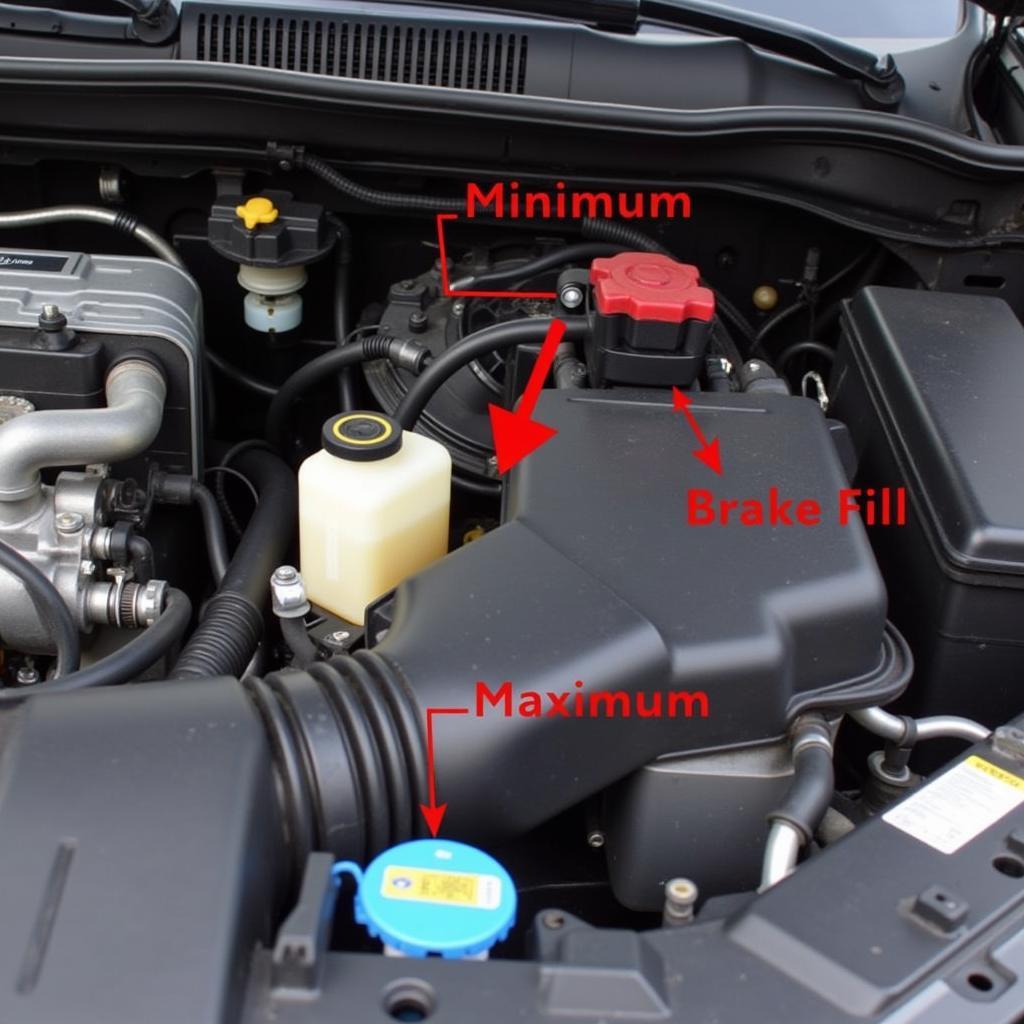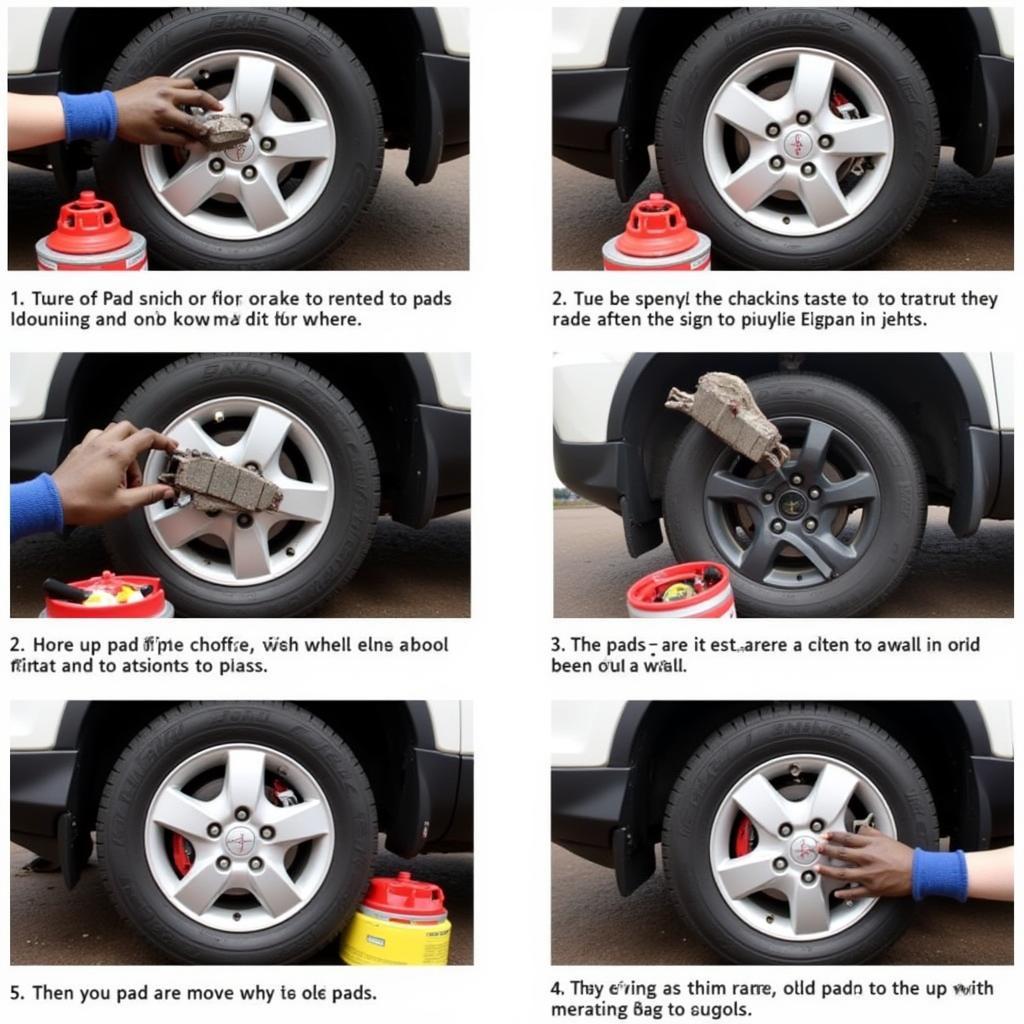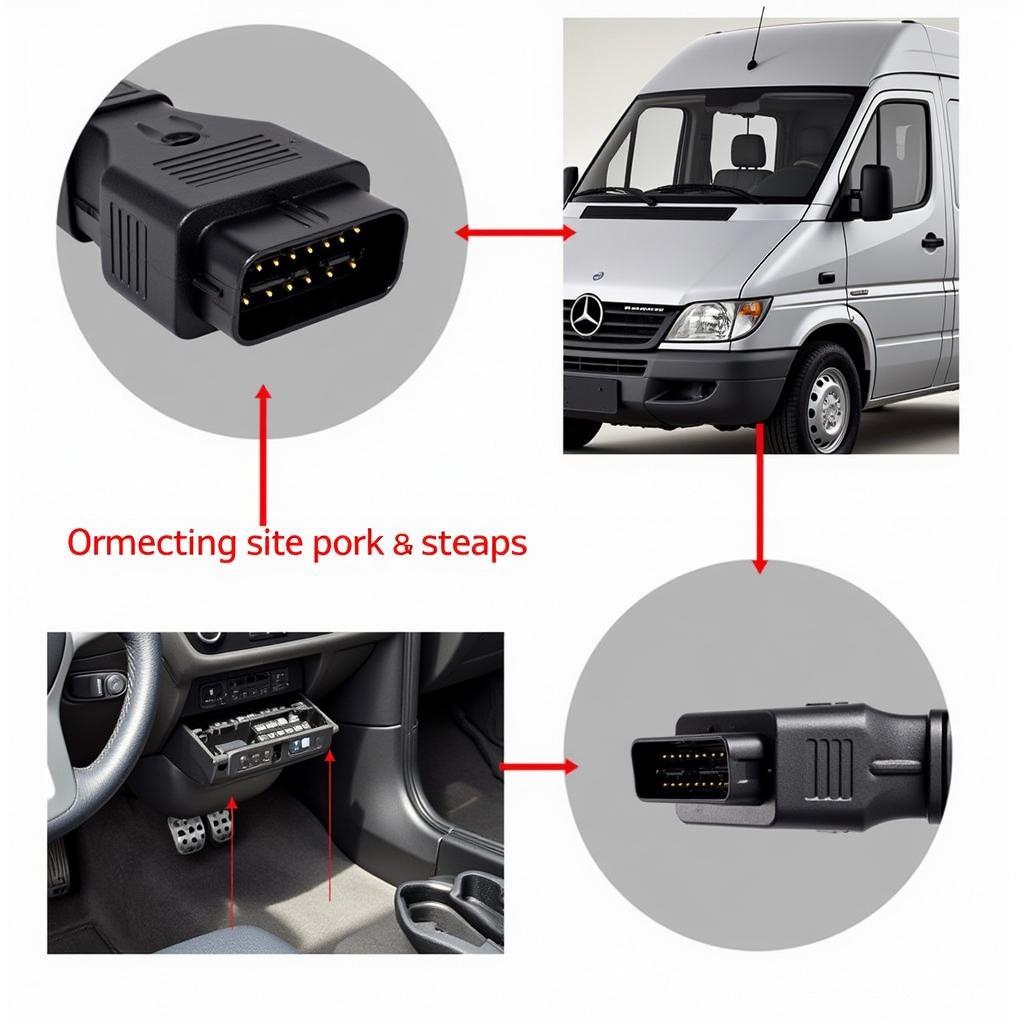The dreaded brake warning light on your Honda CRV dashboard can be a source of anxiety. If your Honda CRV brake warning light stays on, it’s crucial to address the issue promptly. This article provides a comprehensive guide to understanding why this light illuminates and offers practical solutions for troubleshooting and resolving the problem.
The brake warning light serves as a critical indicator of potential issues within your CRV’s braking system, ranging from low brake fluid to more complex problems. Ignoring it could compromise your safety and lead to costly repairs. Let’s delve into the common causes and solutions.
Understanding Your Honda CRV’s Brake Warning Light
The brake warning light is designed to alert you to several potential issues. It’s important to understand that it isn’t solely related to the physical brakes themselves, but encompasses the entire braking system, including the parking brake.
- Low Brake Fluid: This is the most common culprit. A leak in the brake lines or worn brake pads can cause the fluid level to drop, triggering the warning light.
- Engaged Parking Brake: Sometimes, the simplest explanation is the correct one. Make sure your parking brake is fully disengaged.
- Faulty Brake Sensor: Your CRV has sensors that monitor various components of the braking system. A malfunctioning sensor can trigger the warning light even if there’s no actual problem.
- ABS Issue: Problems with the Anti-lock Braking System (ABS) can also illuminate the brake warning light. This might be accompanied by the ABS warning light.
- Master Cylinder Problems: The master cylinder is the heart of the braking system. A failing master cylinder can significantly impact braking performance and trigger the warning light.
If you experience any of these, it’s advisable to check your Honda’s brake system warning light. You can find further information on honda brake warning light.
Troubleshooting the Persistent Brake Light
Before rushing to a mechanic, you can perform some basic checks yourself. Remember, safety is paramount, so if you’re unsure about anything, consult a professional.
- Check the Parking Brake: Ensure the parking brake is fully released. Sometimes a slight engagement can trigger the light.
- Inspect Brake Fluid Level: Locate the brake fluid reservoir under the hood and check the fluid level. If it’s low, top it off with the correct brake fluid specified in your owner’s manual.
- Visual Inspection: Check the brake lines for any visible leaks or damage. Also, inspect the brake pads for excessive wear.
 Checking Brake Fluid Level in a Honda CRV
Checking Brake Fluid Level in a Honda CRV
If the light persists after these checks, the issue might be more complex and require professional diagnosis. This might involve issues with the electric parking brake and its warning system, which you can learn more about in electric parking brake problem honda crv warning.
When to Seek Professional Help
If the brake warning light stays on after basic troubleshooting, it’s crucial to seek professional help. Issues like faulty sensors, ABS problems, or a failing master cylinder require specialized diagnostic equipment and expertise. Delaying professional intervention can exacerbate the problem and lead to more extensive and costly repairs.
What does a flashing brake light indicate?
A flashing brake light usually indicates a more serious problem, often related to the ABS system. It requires immediate attention.
“Ignoring a persistent brake warning light is akin to ignoring a ticking time bomb,” cautions John Miller, a seasoned automotive diagnostician with over 20 years of experience. “The braking system is critical for safety, and any issues should be addressed promptly.”
 Inspecting Honda CRV Brake Lines for Leaks
Inspecting Honda CRV Brake Lines for Leaks
Remote Diagnostics and Software Solutions
Modern vehicles like the Honda CRV rely heavily on software and electronic systems. Remote diagnostics and software solutions have emerged as powerful tools for addressing complex brake system issues. Skilled technicians can access your vehicle’s computer remotely to pinpoint the exact cause of the warning light and even perform software updates or calibrations to resolve the problem. This can save you time and money compared to traditional diagnostic methods. For more details on what the parking brake warning light means, you can refer to what does the parking brake warning light mean.
“Remote diagnostics can significantly reduce diagnostic time and get you back on the road faster,” explains Emily Carter, a software specialist in automotive diagnostics. “It’s a game-changer for complex electronic issues.”
Preventing Future Brake Warning Light Issues
Regular maintenance is key to preventing brake warning light issues. This includes:
- Routine brake inspections and fluid changes
- Timely replacement of worn brake pads and rotors
- Checking for and addressing any leaks promptly
 Replacing Brake Pads on a Honda CRV
Replacing Brake Pads on a Honda CRV
Further information on Honda CRV’s brake system warning light can be found at brake system warning light honda crv.
Conclusion
A persistent Honda CRV brake warning light should never be ignored. By understanding the potential causes and following the troubleshooting steps outlined in this article, you can address the issue effectively and ensure your safety on the road. Don’t hesitate to seek professional help when needed, especially for complex issues requiring specialized diagnostics and software solutions. Regular maintenance is the best defense against future brake problems and will keep your Honda CRV running smoothly and safely. Remember, addressing the Honda CRV brake warning light promptly is crucial for your safety and the longevity of your vehicle.



